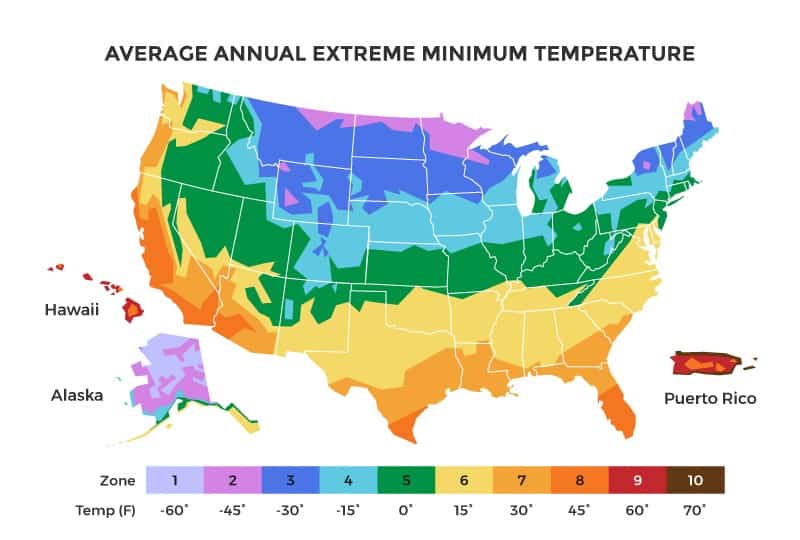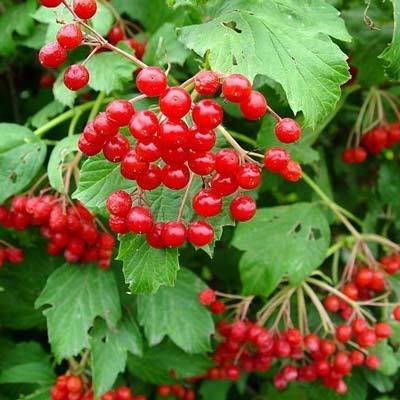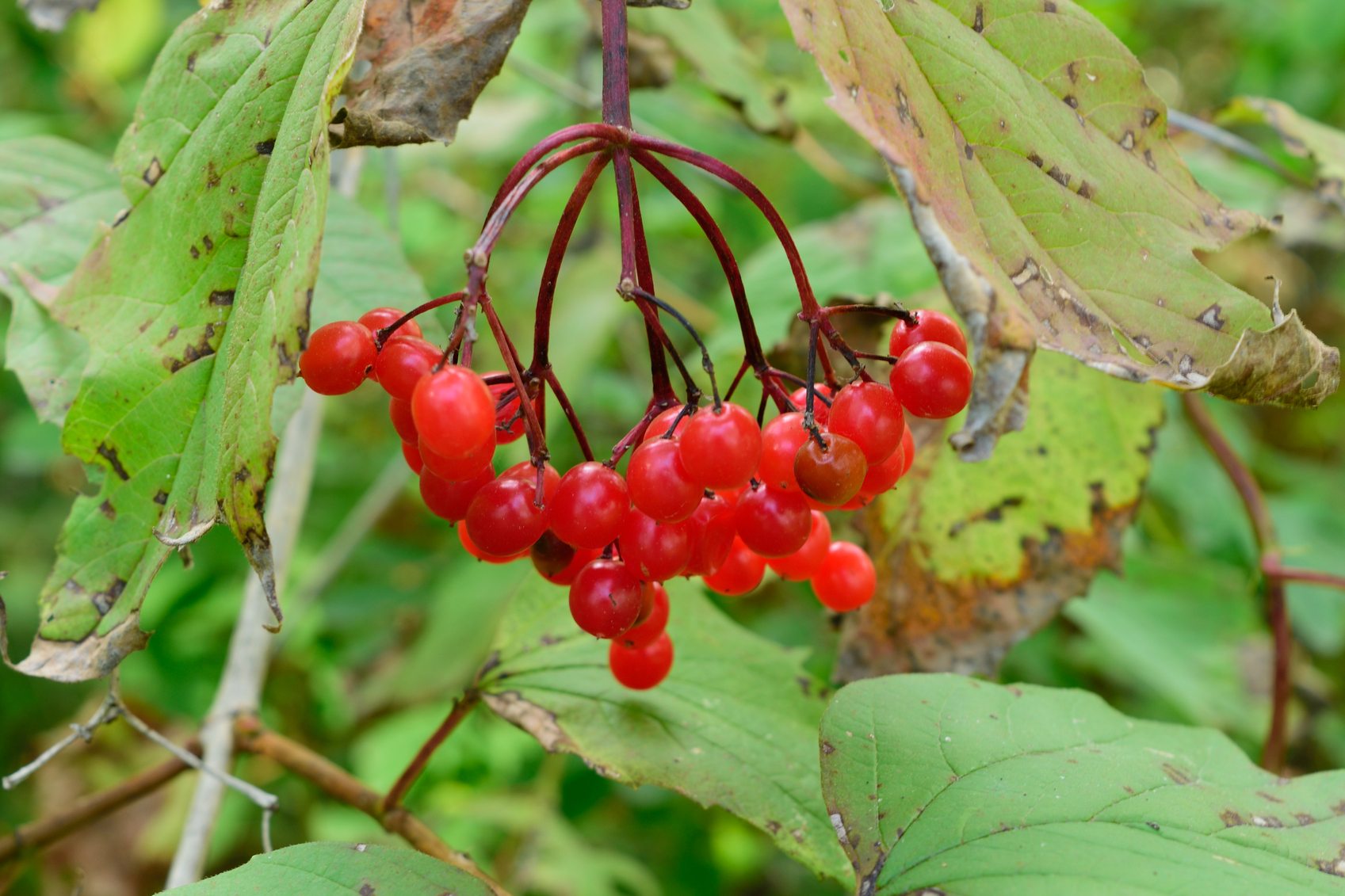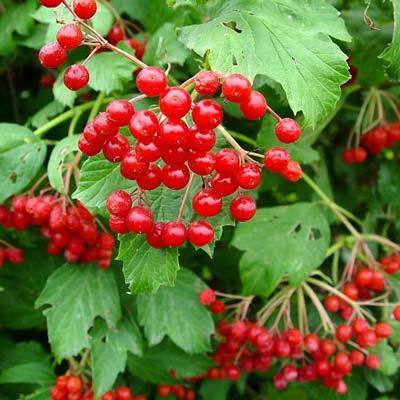
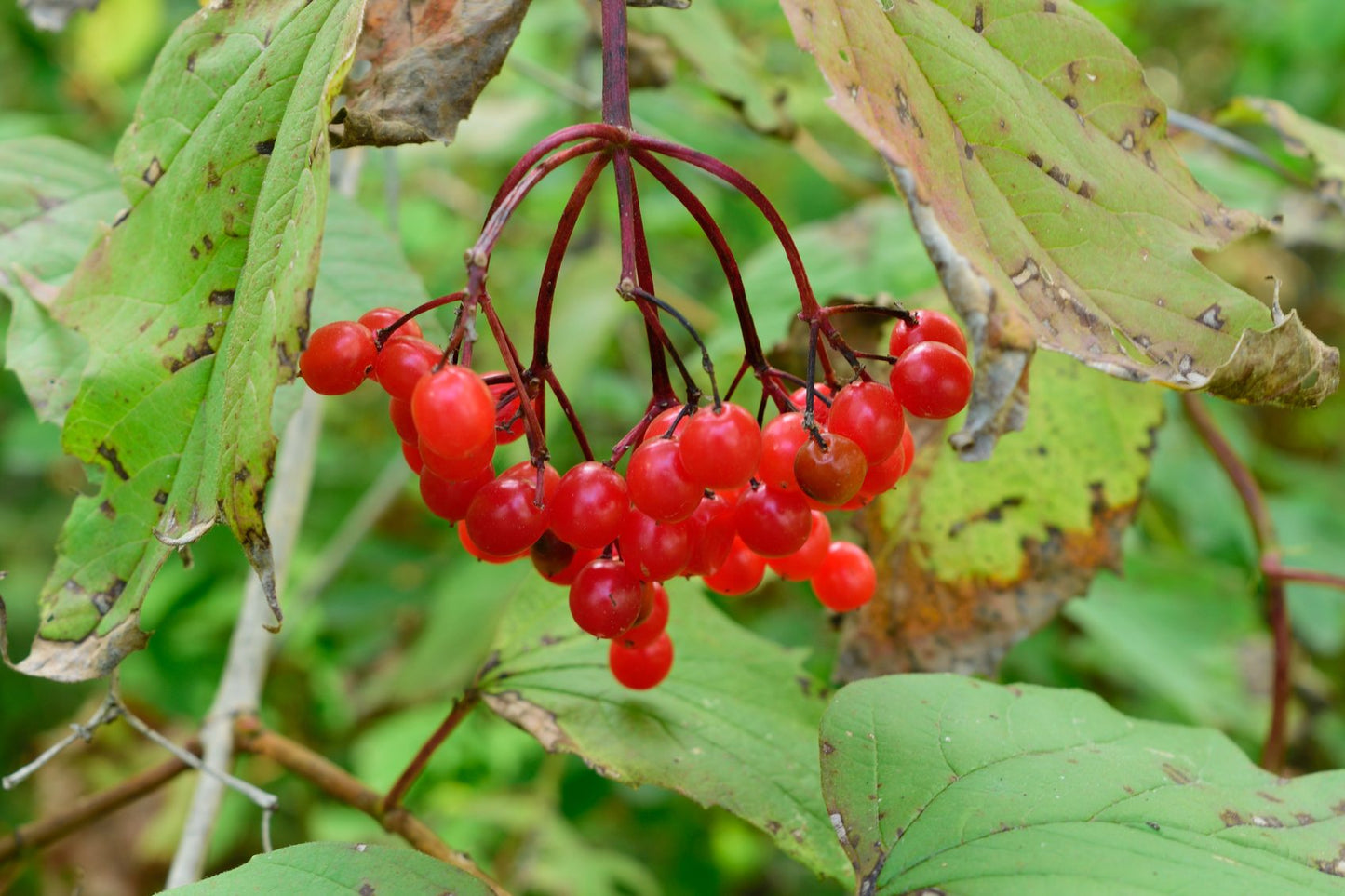
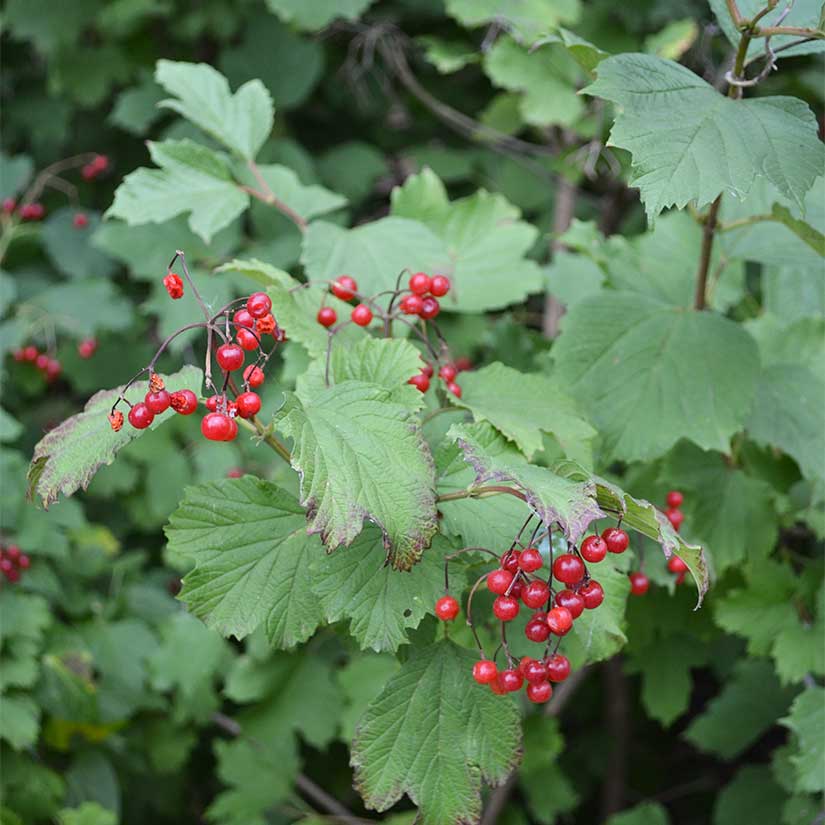
Vaccinium macrocarpon
The classic native cranberry bush produces abundant bright red, round fruits. You don't need a bog to grow these! Excellent for jams, sauces, and juices. A low-growing viney shrub.
Type: Perennial
Sun: Full/Partial Shade
Planting Depth: 1”
Spacing: 18"
Water: High
Days to Maturity/Bloom: 3-4 years
Height: 36-50”
Zones: 2-6
Planting Instructions
Type: PerennialSun: Full/Partial Shade
Planting Depth: 1”
Spacing: 18"
Water: High
Days to Maturity/Bloom: 3-4 years
Height: 36-50”
Zones: 2-6
Cranberries can grow on dry land; they don't need bogs like the commercials show!
The cranberry plant is a low-lying perennial vine which averages between 1-6 feet. It has three special growing requirements: soil with a pH of 5.0 or less, irrigation, and a climate with three months of cold weather, below 40F. Vines bear fruit to harvest after the third year and will continue to do so for decades.
Cranberry seeds must be cold-stratified before planting. Place the seeds on a damp paper towel, fold up the towel, and place it in a plastic bag. Do not seal the bag; this allows for air-flow. Place the bag in the refrigerator and leave it there for at least 3 months. Check them every couple of weeks and re-dampen the paper towel (carefully), if needed.
In spring, plant the seeds in a pots filled with a rich, peat potting mix. Keep the soil warm, 70F or above, and the seeds will sprout in around 3 weeks. Keep the soil moist but not drenched.
Let the seedlings grow in the pot all summer and fall. They are fragile and need to develop a root system.
Transplant them in late fall, about a month before the first expected frost, to their permanent location. Set them 18” apart. The ideal soil is a 2:1 mix of peat to sand with rich clay soil below. Mulch with sand around the plants to suppress weed growth and encourage root formation.
The soil needs to be continuously moist. An irrigation system is best for this. Mulch with sand around the plants every fall to protect them.
USDA Zone Map
